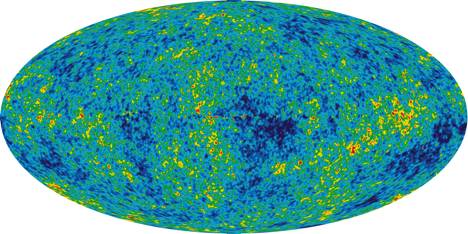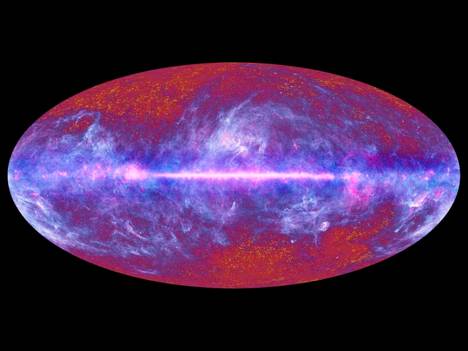Strengthening the Case for a Cosmic Creator, Part 1 (of 2)
Between the ages of 17 and 19, I spent an hour or two a day studying the Bible and testing its claims for divine inspiration, complete trustworthiness, and reliability of its message. In eight months I accumulated more than sufficient evidence to prove that the Bible must be the Word of God. However, before committing my life to Jesus Christ I wanted to see if the case for biblical inerrancy and divine inspiration would grow more compelling in proportion to continued study of the Bible. I soon discovered that the more I studied and tested the Bible the more convincing the evidence for it being God’s Word became. This revelation not only persuaded me to sign my name in the back of a Gideon Bible, as a sign of my commitment to Christ, it motivated me to continuing searching for gems of truth in Scripture and thereby learn more about God.
What is true about the Bible is also true about the universe. The more we study the cosmos, the more detailed and more specified the cosmic creation model becomes. Thus, we can place greater confidence in God, the cosmic Creator.
The most compelling scientific evidences for God’s existence include:
- astronomical observations verifying the Bible’s unique and accurate predictions of big bang cosmology’s fundamental elements, thousands of years in advance of its time1; and
- the fact that big bang cosmology demands the existence of a personal God beyond space and time who creates the universe and exquisitely designs its physics and features for the benefit of human beings.2
Astronomers have not only proven, beyond any reasonable doubt, that the universe resulted from a big bang event, they have also determined what kind of big bang event is responsible for the universe we presently enjoy. Researchers now know that an inflationary hot big bang creation event gave rise to the universe. These discoveries have, in turn, bolstered confidence in the cosmic Creator.
Cosmic inflation refers to that brief moment, between 10-35 and 10-32 seconds after the creation event, when the universe hyperinflated. Astronomers conclude that during that extremely brief instant the universe grew from one hundred million trillion times smaller than the diameter of a proton to about the size of a grapefruit. That is, the volume of the universe expanded by a factor of 10102 times in less than 10-32 seconds! In big bang cosmology nothing less than such extreme hyperinflation shortly after the universe’s birth would allow it to possibly support life.
Without the hyperinflation episode the universe would lack the uniformity and homogeneity that life demands. (The stars and planets needed for the support of life can form only in an extremely uniform and homogeneous universe.) Such uniformity and homogeneity demands that light (or heat) everywhere in the universe be thermally connected to light (or heat) everywhere else in the universe. But, without inflation, there is not enough time in a 14-billion-year-old universe for light to travel the necessary distances to explain the thermal connections.
A team of American and Norwegian mathematicians, astronomers, and physicists, led by Nicolaas Groeneboom, recently reanalyzed the five-year Wilkinson Microwave Anisotropy Probe (WMAP) data (see figure 1) to pave the way for determining exactly what kind of inflation brought about the cosmic conditions that permit advanced life to exist.3 The team’s analysis challenges recent calculations showing that the cosmic inflation may not be as isotropic as the best models for galaxy and galaxy cluster formation apparently require.

Figure 1: WMAP Map of Radiation Left Over from Cosmic Creation Event
Five years of observations by the WMAP satellite yielded this detailed map of the first moment in cosmic history (approximately 380,000 years after the creation event), when light separated from darkness. The hot spots (colored red, orange, and yellow) measure about 0.00001° Centigrade warmer than the cold spots (colored blue and green). The hot spots give rise to galaxy clusters while the cold spots become voids.
Image credit: NASA
Figure 1: WMAP Map of Radiation Left Over from Cosmic Creation Event
Five years of observations by the WMAP satellite yielded this detailed map of the first moment in cosmic history (approximately 380,000 years after the creation event), when light separated from darkness. The hot spots (colored red, orange, and yellow) measure about 0.00001° Centigrade warmer than the cold spots (colored blue and green). The hot spots give rise to galaxy clusters while the cold spots become voids.
Image credit: NASA
Groeneboom’s team revisited the anisotropic inflation universe models. They generalized both the theoretical and computational methods (used to develop those models) to include “polarization and various forms of systematic effects.” For example, the team carefully eliminated zodiacal light emission, noise misidentification, and the impact of asymmetric beams from the WMAP data. Nevertheless, the team still found a preferred direction, that is an anisotropy, in the WMAP temperature map. However, they did discover that the preferred direction is aligned along the plane of the solar system. Such an alignment, they concluded, could not be coincidental. It strongly suggested that “the signal is not of cosmological origin, but most likely is a product of some unknown systematic effect.”4
The analysis performed by Groeneboom’s team eliminates much of the mystery about the isotropy or anisotropy in the cosmic inflation. Any such anisotropies are likely to be small or nonexistent.
The team’s work also paves the way for development of an increasingly detailed and specific cosmic creation model. Once the nature of the systematic effect (the preferential alignment of the cosmic microwave background radiation—CMBR, the radiation left over from the creation event—with the solar system plane) they uncovered is identified and understood, astronomers will be able to pull even more cosmological information from present and future maps of the CMBR. Identifying and understanding the new systematic effect takes on particular significance since the Planck satellite is already accumulating data that will provide CMBR maps more precise than the WMAP. In preparation for these forthcoming resources Groeneboom’s team made specific forecasts to guide the identification of their discovered systematic effect.

The signal from the plane of the Milky Way Galaxy and from bright extragalactic sources must first be removed to reveal the full-sky map of the cosmic background radiation. Such a cleaned-up map will be released within a year or two.
Image credit: ESA, Planck HFI & LFI
Groeneboom’s team has already given us a more detailed and specific understanding of cosmic inflation with the promise of more detail and specificity soon to come. Knowing what kind of inflation emerged from the cosmic creation event should both strengthen the case for the Creator and uncover even more evidence for cosmic design for the benefit of life, human beings in particular.
| Part 1 | Part 2 |
Endnotes
- Hugh Ross, A Matter of Days (Colorado Springs: NavPress, 2004), 139–48.
- Hugh Ross, More Than a Theory (Grand Rapids: Baker, 2009), 93–147.
- Nicolaas E. Groeneboom et al., “Bayesian Analysis of an Anisotropic Universe Model: Systematics and Polarization,” Astrophysical Journal 722 (October 10, 2010): 452–59.
- Nicolaas E. Groeneboom et al.: 452.




